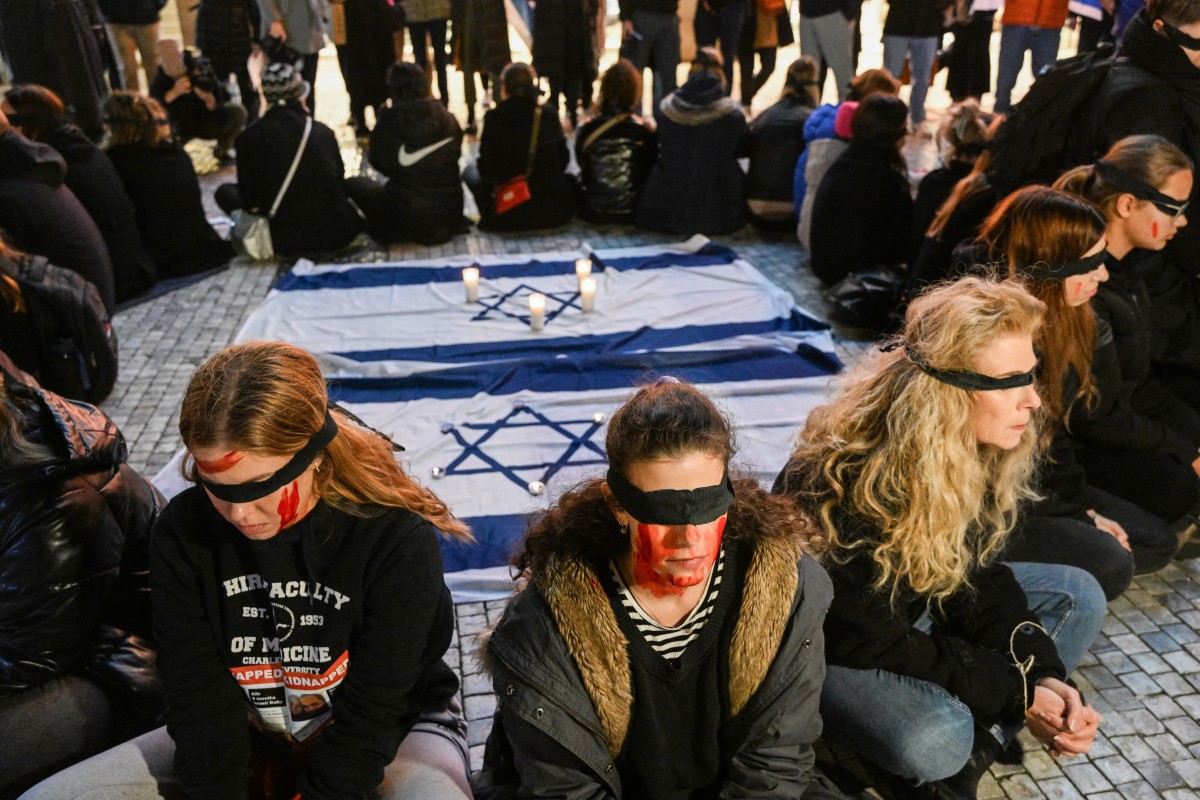Benyamin Netanyahu’s Israeli government gave its approval to an agreement aimed at securing the release of 50 hostages held by Hamas. It provides for an exchange with Palestinian prisoners and a four-day cessation of hostilities in the Gaza Strip, marking a first sign of respite after five weeks of intense conflict.
According to a government statement sent to AFP in Hebrew, “the government has approved the outlines of the first stage of an agreement under which at least 50 kidnapped people, including women and children, will be released for four days during which there will be a lull in the fighting”. Prime Minister Benjamin Netanyahu had previously described the decision to release the hostages as a “good decision”, prior to the cabinet’s green light issued early on Wednesday.
In detail, the agreement is divided into two stages, each comprising several phases, according to the document approved and published by the Israeli government. In the first stage, Israel will release a total of 150 Palestinian prisoners once 50 hostages have been brought back alive. The operation will take place in four phases, with at least ten hostages released in each phase. This first sequence will last “four days, during which the fighting will pause”, says the document.
Hostages freed
Speaking to AFP, a senior Hamas official said he expected “an initial exchange of 10 hostages for 30 prisoners to take place as early as Thursday”. For each additional release of 10 hostages, there will be a further 24-hour pause in the fighting. In the second phase, Israel will release “up to 150 more prisoners” on condition that at least “50 more hostages are returned to Israel”. Again, each phase calls for the release of at least ten hostages. The whole process is limited to a maximum of ten days from the end of the first phase, according to the document.
Hamas, the Islamist movement ruling the Gaza Strip, kidnapped around 240 people during its bloody attack on Israel on October 7. Hamas hailed the agreement as a “humanitarian truce”, stressing that its terms were in line with the resistance’s vision. The Qatari authorities, at the heart of the truce talks, confirmed an agreement for a “humanitarian pause” in the Gaza Strip.
Hostages released
The United States expects the release of “more than 50” hostages held by Hamas in Gaza, including three American women, according to a senior White House official. President Joe Biden declared himself “extraordinarily satisfied”, and Russia welcomed the agreement, stressing that it was in line with its calls from the start of the escalating conflict.
In addition to Israelis, 27 nationalities are represented among the hostages, according to official figures as of November 7. Among them are French nationals. Eight are missing or hostages, including three children, who were on Kibbutz Nir Oz at the time of their abduction. Three other French people, two men and a woman, were taking part in the Tribe of Nova techno music festival on the day of the attack. The Minister of Foreign Affairs hopes that these Frenchmen will be among those freed. “We hope there are French people among them, and we’re working on it,” Catherine Colonna told Franceinter.
A war without end ?
However, Israeli Defense Minister Yoav Gallant warned that the truce agreement did not mean the end of the war in Gaza. He expressed the wish for a “full-force” resumption of operations after the truce, with the aim of “defeating” Hamas and “creating the conditions necessary to bring other hostages home”. The Israeli government confirmed its continued commitment to the war for the release of all abductees, the elimination of Hamas and the guarantee that there will be no further threat to the State of Israel from Gaza.
Despite the truce agreement, the international community and many foreign capitals maintain their calls for a ceasefire or truce, underlining the catastrophic humanitarian situation in the besieged territory of Gaza, where the war has caused the destruction of entire neighborhoods, devastated the health system and led to massive population displacement.
Repercussions beyond borders
The United Nations Children’s Fund (Unicef) has warned of an imminent health “tragedy” in Gaza due to water and fuel shortages. In Israel, the October 7 attack by Hamas killed 1,200 people, mainly civilians, according to the authorities. In retaliation, Israel promised to “annihilate” Hamas, launching a ground offensive on October 27.
The conflict also had repercussions in Lebanon, where eight people, including two journalists, were killed in Israeli strikes. Russia welcomed the agreement, and the White House is now hoping for a “complete pause” in hostilities between the Lebanese Hezbollah and the Israeli army on the Israeli-Lebanese border. In Iraq, a US strike was carried out in response to an attack on US military personnel in the region, killing pro-Iranian militia fighters, according to the Pentagon.

